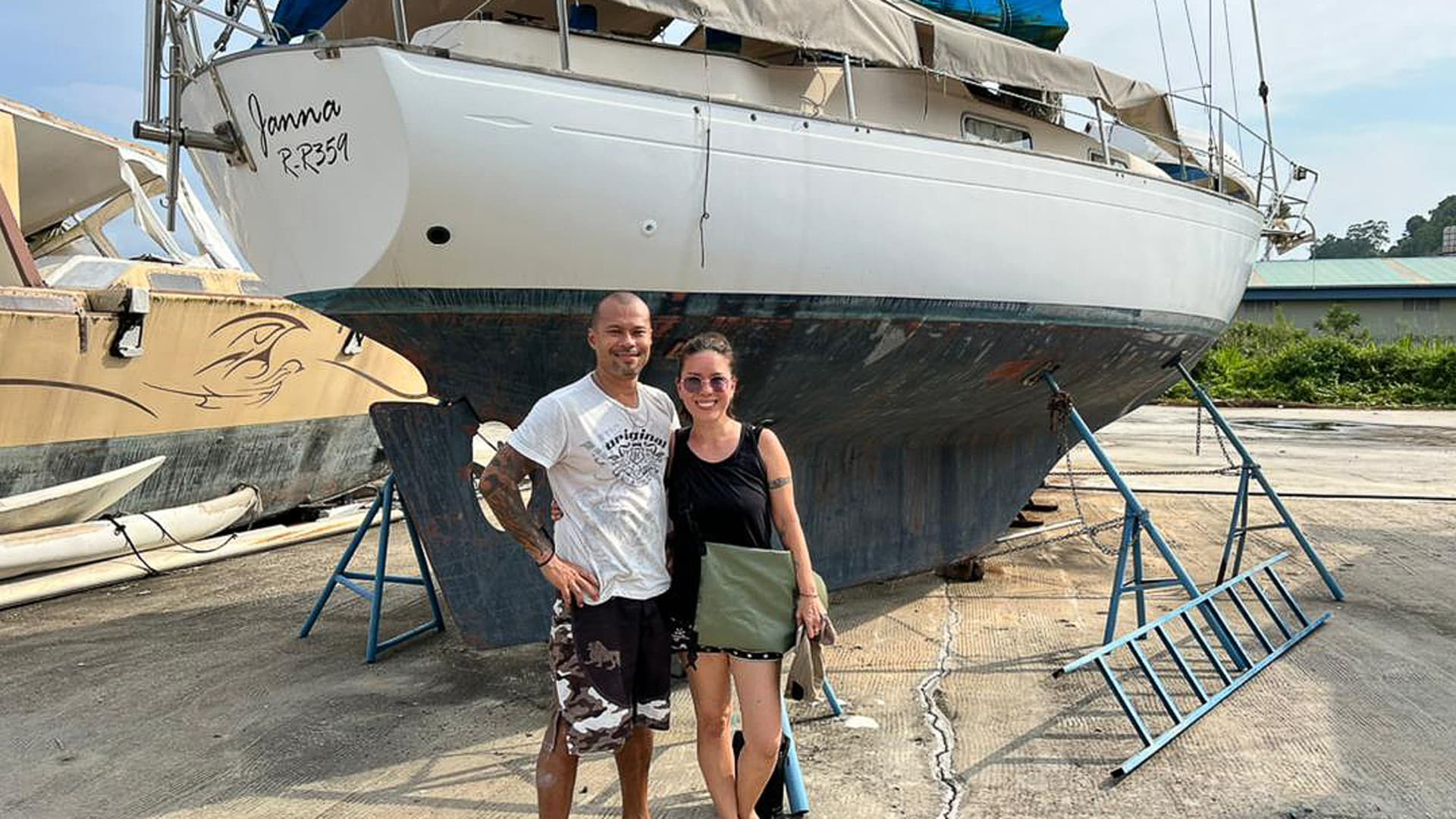“What if I were to die tomorrow, what would you do for the rest of your life?”
That’s what Malaysian Samantha Khoo asked her Singaporean husband Rene Sullivan in 2017, when he came home late from a long day of work.
“It was really sudden and it took me some time before I answered her,” he told CNBC via video from Langkawi, Malaysia. “I said, ‘Well, if that happens, then I just take my guitar … and then travel the world’.”
Khoo replied, “Why are we waiting for me to die for you to do this?”
“Here we are chasing these goals. Pay up your debts, get your house, do your business … We did it all. We’re at this point where we’re still like: When is it ever enough?”
The couple, now in their late 40s, were running businesses of their own back then.
“It was a change of perspective. Money can no longer be our currency because … it’s never going [to be] enough. Time became our currency — how do we spend our time doing what we want?”
How they got started
The first thing the duo did was sell most of their possessions, including their businesses and real estate, said Sullivan.
“We start cutting everything,” he said. “You realize you don’t really need a lot of money — because you’re not paying your staff, you’re not paying your rent, you’re not paying for a property, you’re not paying for your [credit] cards.”
They have since become “small-time investors,” said Sullivan.
Sullivan and Khoo, who’ve been married for 22 years, said the most important thing that enabled them to travel full time was being debt-free.
“We are not rich,” Khoo insisted. “It was very important [to be debt-free]. For example, for properties that we bought, we made sure that [they were] paid off within five years.”
The couple bought an ex-military van for $3,600 and converted it into a campervan. For three years, they traveled across Malaysia and conquered “the whole of Thailand,” said Khoo.
“The best part of van life for both of us is the freedom of not having to pre-book air tickets or trains, buses or hotels. We can come and go when we like,” she added.
Discovering boat life
In 2019, they started planning a six-month road trip to the U.K., which would have taken them through China, Mongolia, Russia and Europe.
They were all ready to go when the Covid-19 pandemic hit. So they put their plans on hold.
Earlier this year, many countries reopened their borders to travelers, and the couple were preparing to leave.
“And then the [Russian-Ukraine] war happened. Nothing said that it was a good time to do land travel,” said Khoo.
With their plans thwarted, the couple started dreaming about their next adventure. Khoo spent a lot of time watching videos on YouTube, and she chanced upon one about living in a tiny boat.
“I was like, ‘Oh, I can do this,'” she said. Sullivan, however, was not so keen.
“I was skeptical of everything — [dealing with] the weather and then being in the ocean all by yourself. I’m kind of chicken that way,” he said with a laugh.
The compromise? Sullivan agreed to test the waters of sail life before committing to buying a boat.
They spent four months at Pangkor Marina in Malaysia, where they worked for boat owners without pay to gain knowledge about boat life and maintenance.
Sullivan eventually fell in love with the lifestyle. In April this year, the couple bought a secondhand full-keel boat for $15,000.
‘Bring on another 1,000’
While the idea of living on a sailboat is relaxing, Khoo and Sullivan said it’s anything but glamorous.
“There’s really a lot of hard work that goes into it. We are learning new skills every day,” said Khoo. “This boat is not just our home, but it’s also our university, our dormitory, our office.”
There is a common saying that “boat” stands for “bring on another thousand,” said Khoo.
“It means that when something breaks, you’re going to spend $1,000 on it.”
Sullivan added, “Learning about the engine and [fixing] it ourselves, you save a lot. So if you know how to do it, you just buy the parts, and you fix it yourself.”
Sullivan said he picks up skills from other boaters as well as online.
“It’s all available on YouTube … It just takes more time for you to learn,” he said.
That’s why the couple have yet to leave Talagar Harbor in Langkawi, where their boat has been anchored for the past three months.
“People are like: ‘Go already, you guys are ready,'” said Sullivan.
But he said they’re content to go slowly — to focus on anchoring the boat, then returning to shore for the time being — and review their progress quarterly.
“We don’t pressure ourselves because we just want to be like 1% better than yesterday,” he said.
Becoming capable sailors
Khoo and Sullivan also run a YouTube channel called 24 Hour Travellers, where they document their adventures and interview other travelers.
The couple said being round-the-clock travelers is matter of perspective.
“It’s about … how you can change your perspective and be happy where you are,” Khoo said.
“At Talagar Harbor, when we walk to the main gate, we pass a South African captain, a French captain, a German sailor, an Indonesian carpenter … they become your neighbors,” she added.
“Knowing the boat owners, it’s already like traveling the world,” she said.
For now, the couple are focused on taking “baby steps” to achieve their goal — to become capable sailors and set sail to Thailand next year.
“The dream is to anchor our boat in blue water and be surrounded by islands,” Khoo said.
